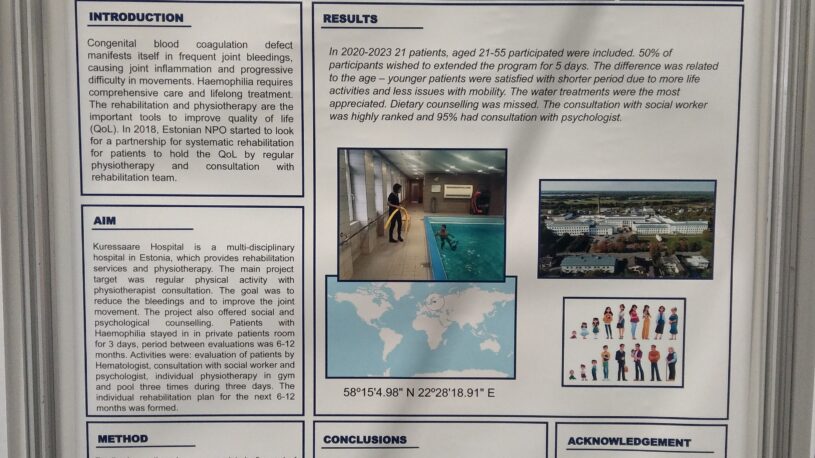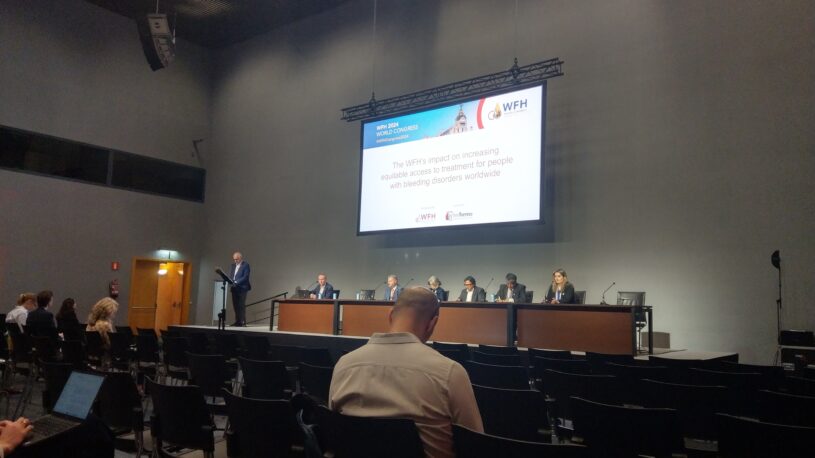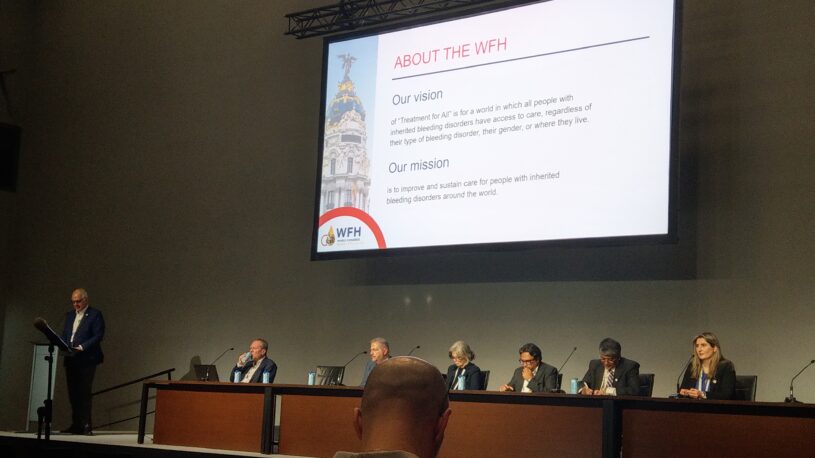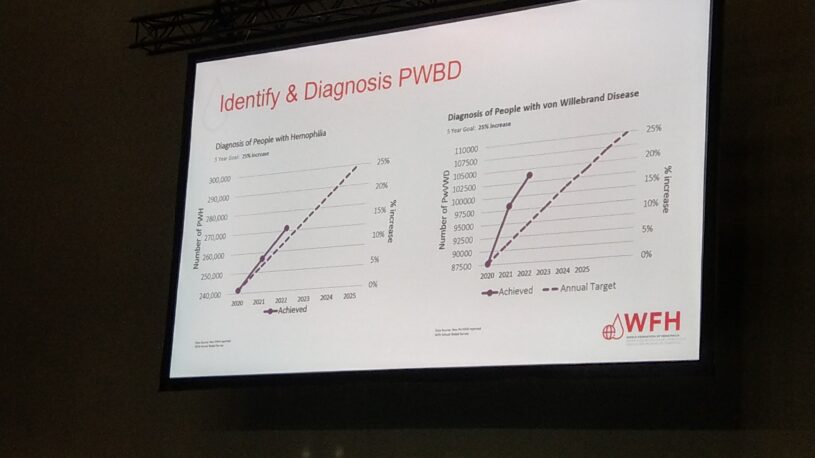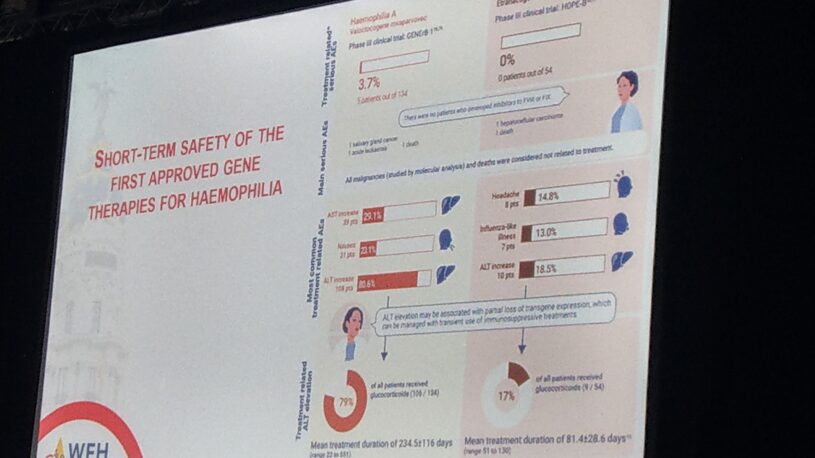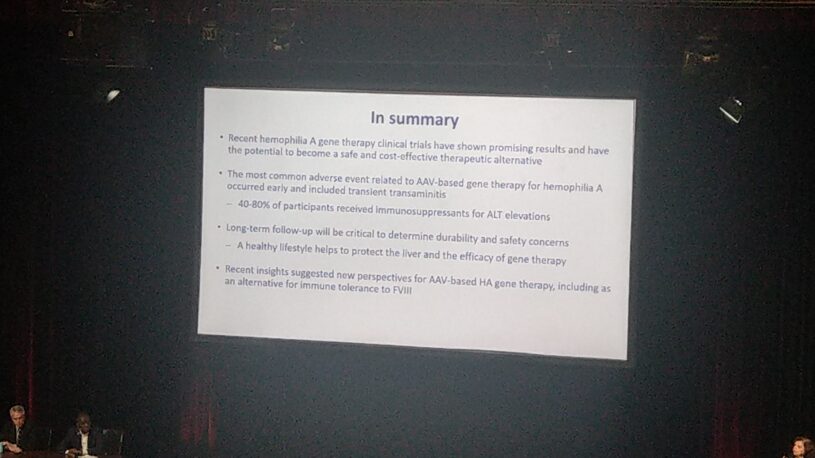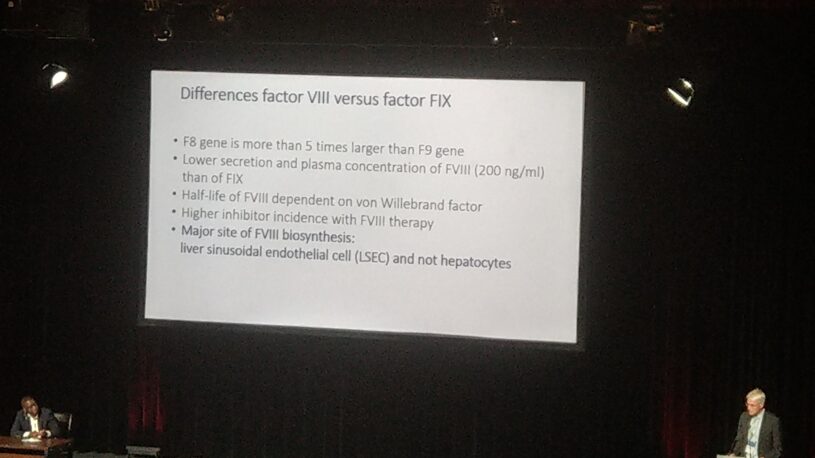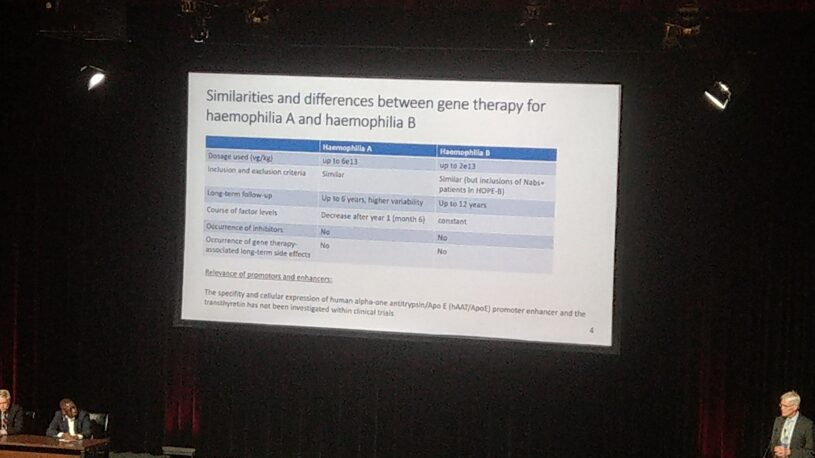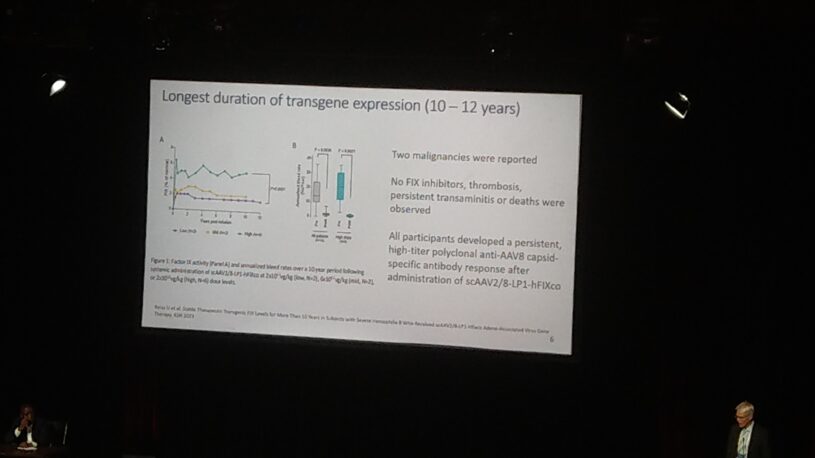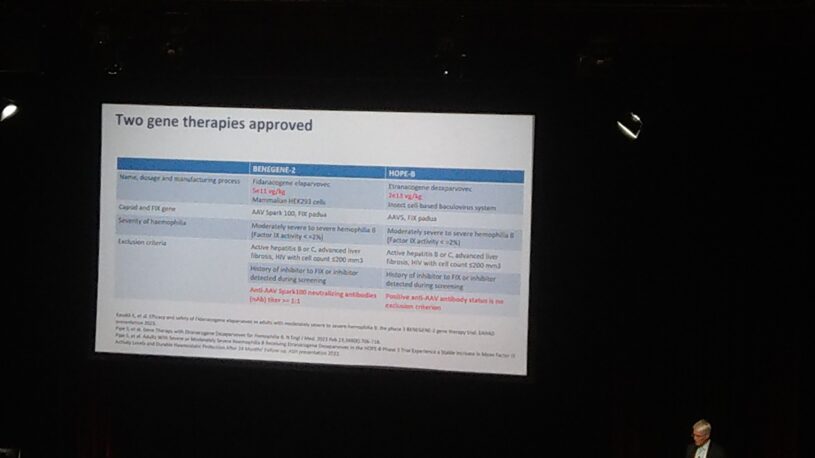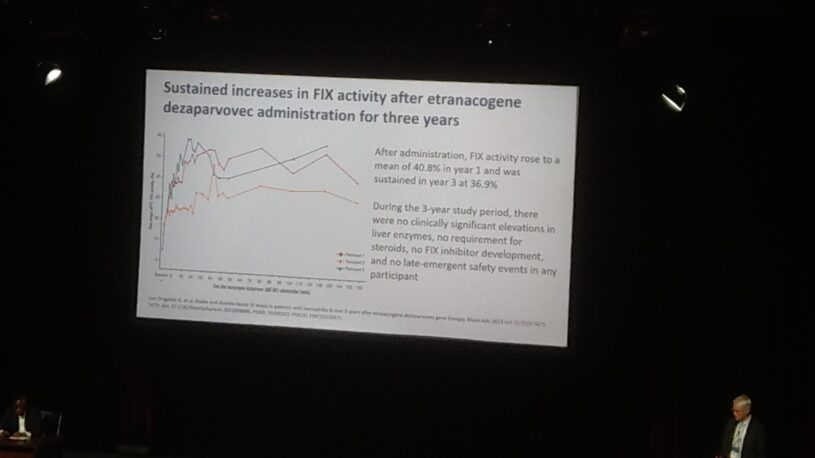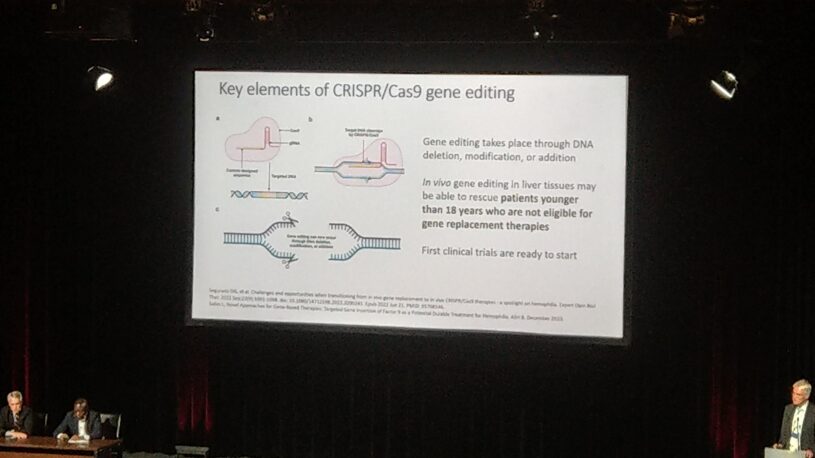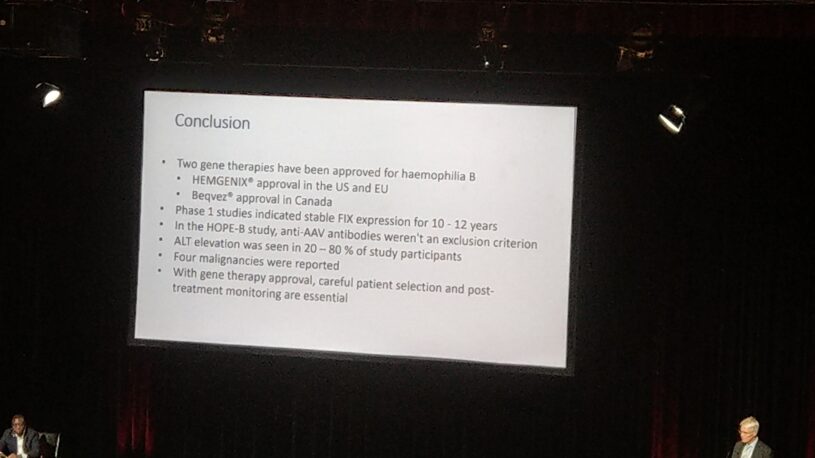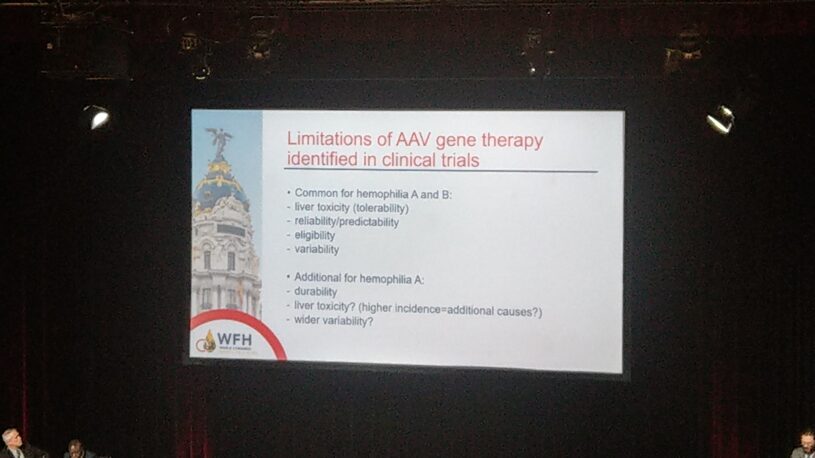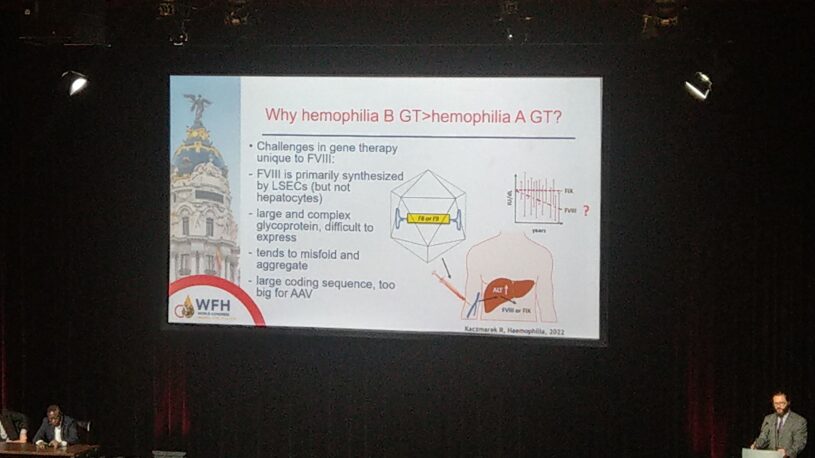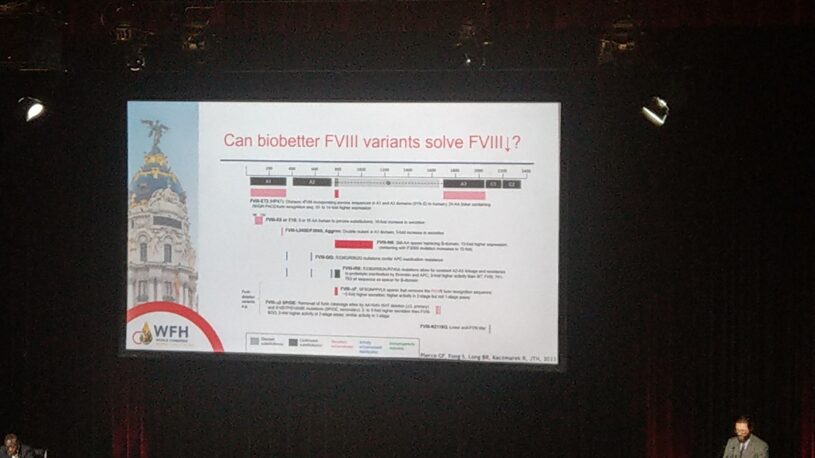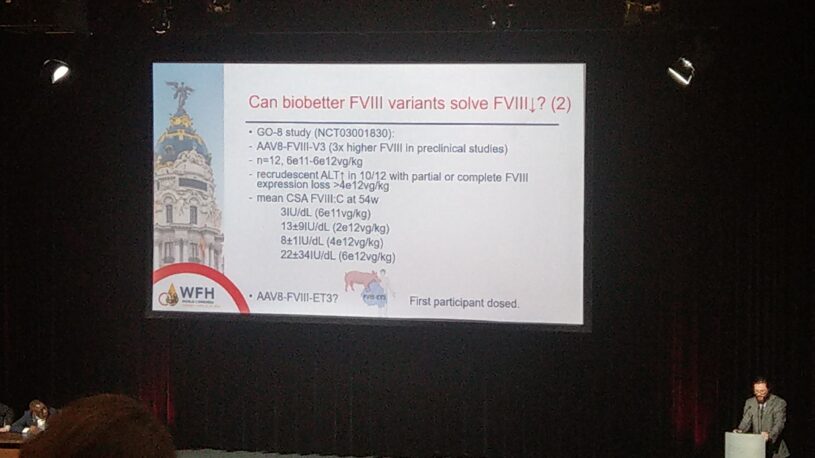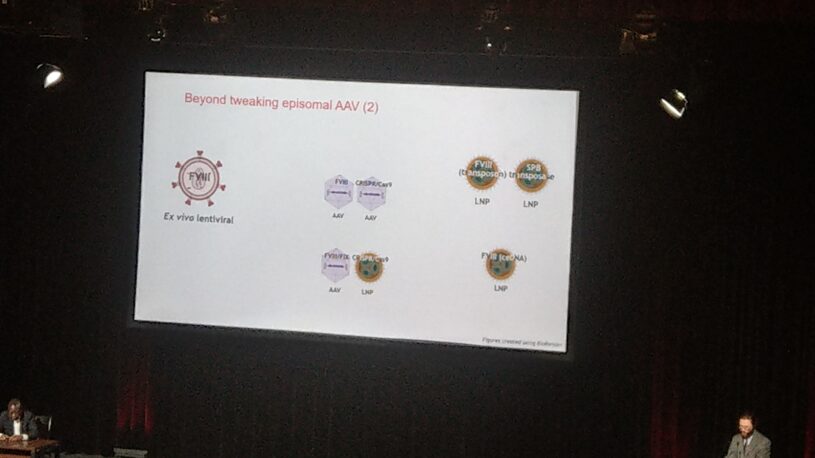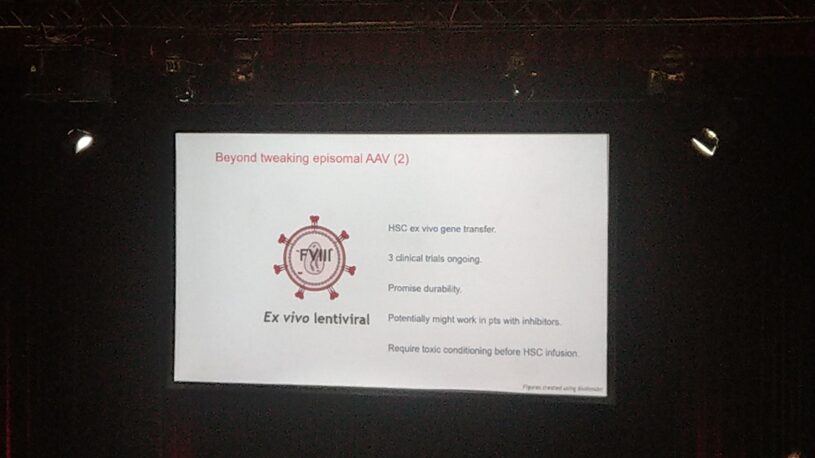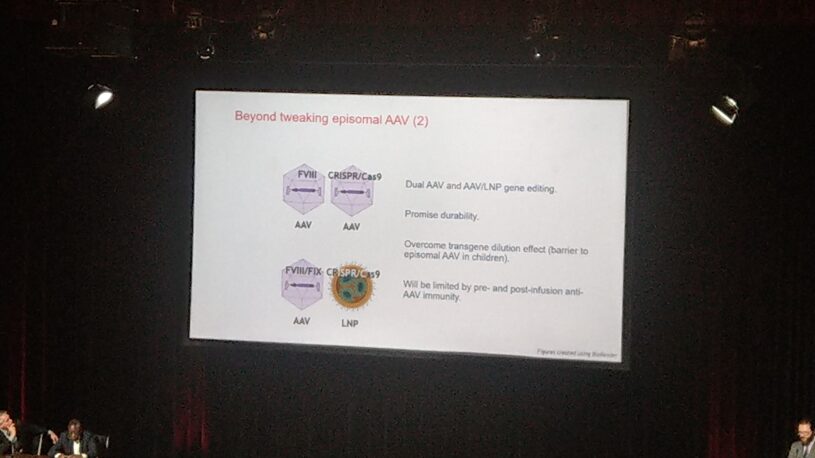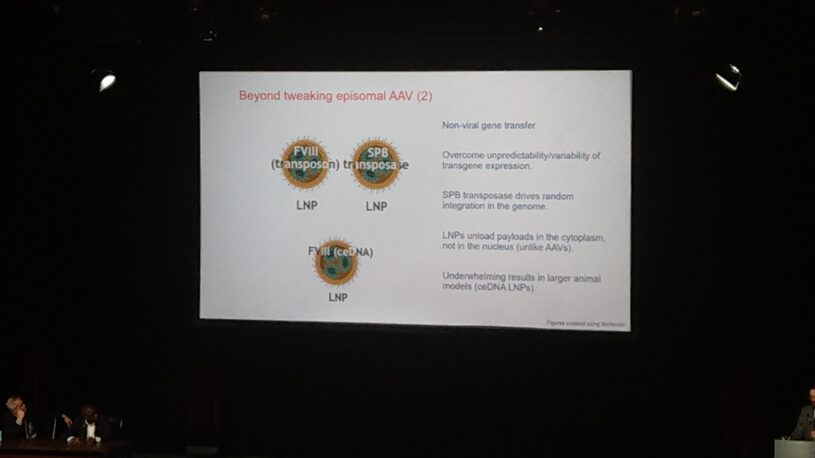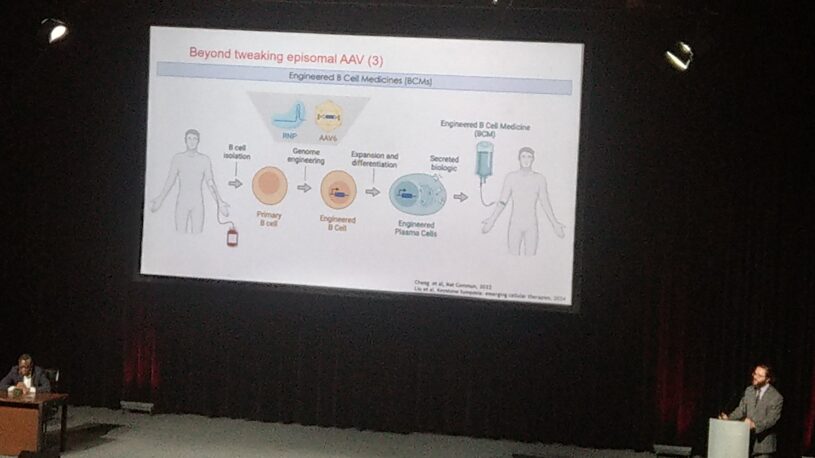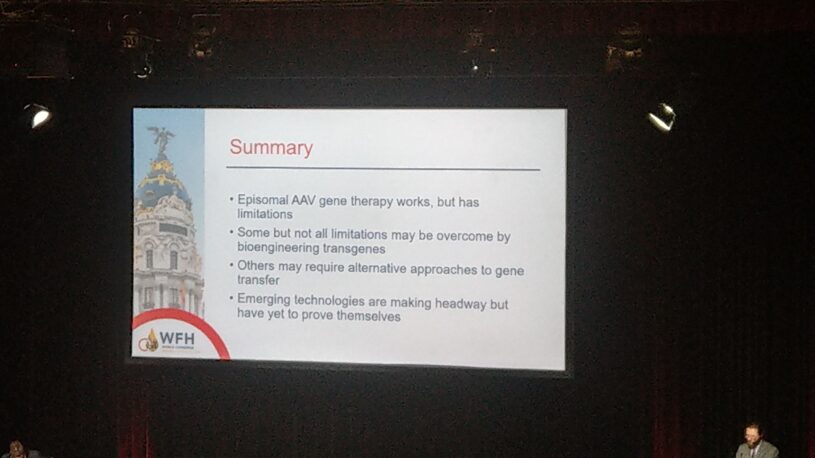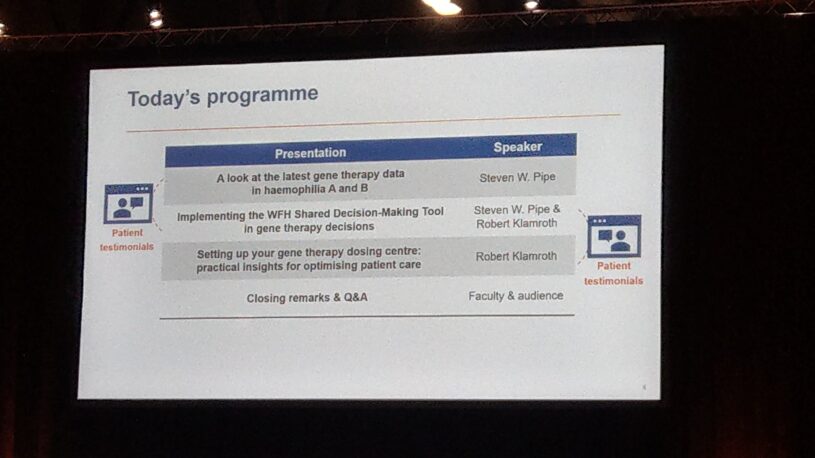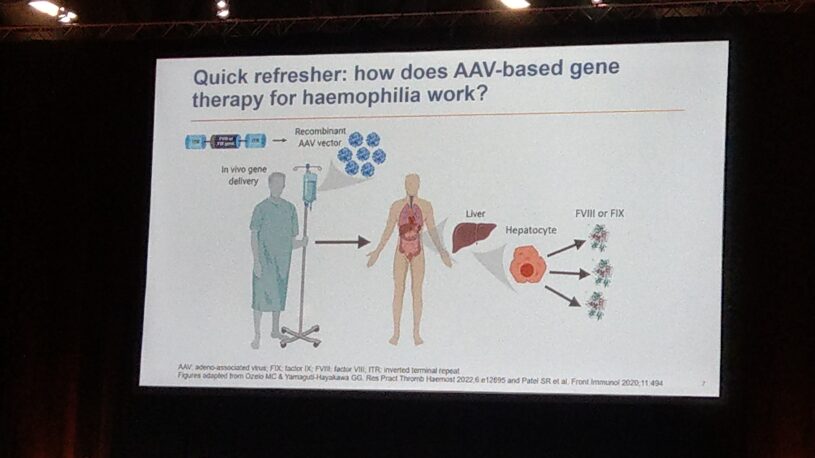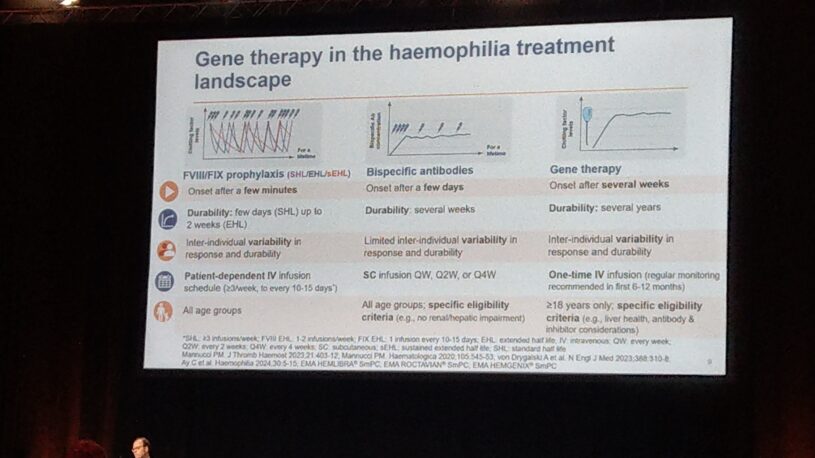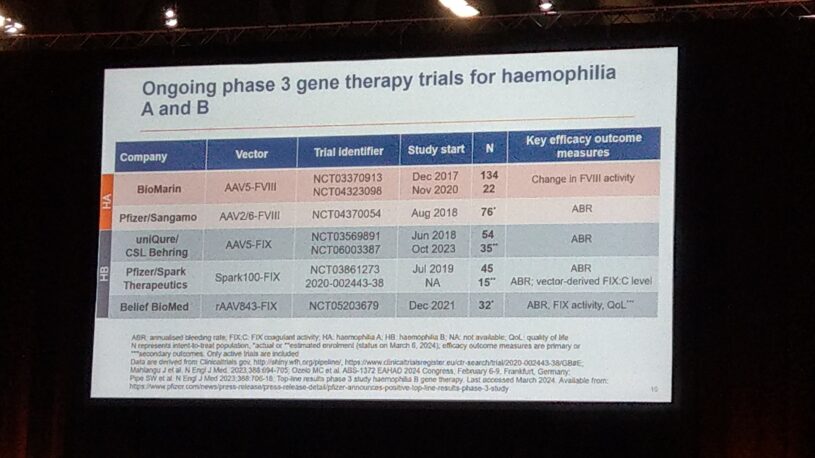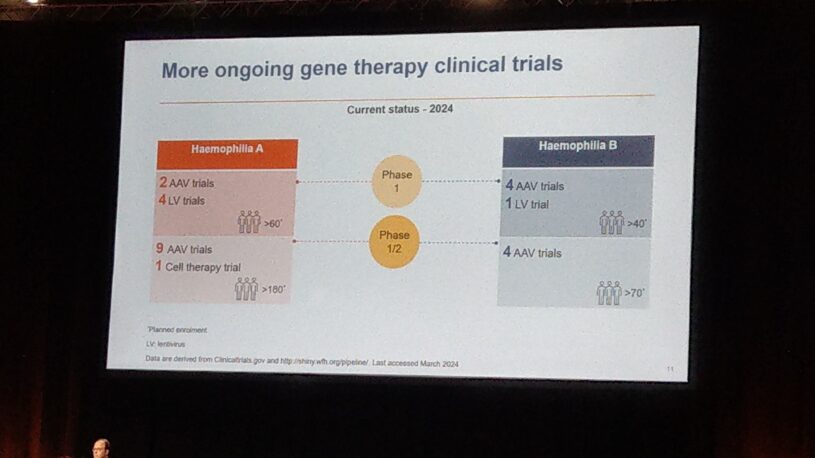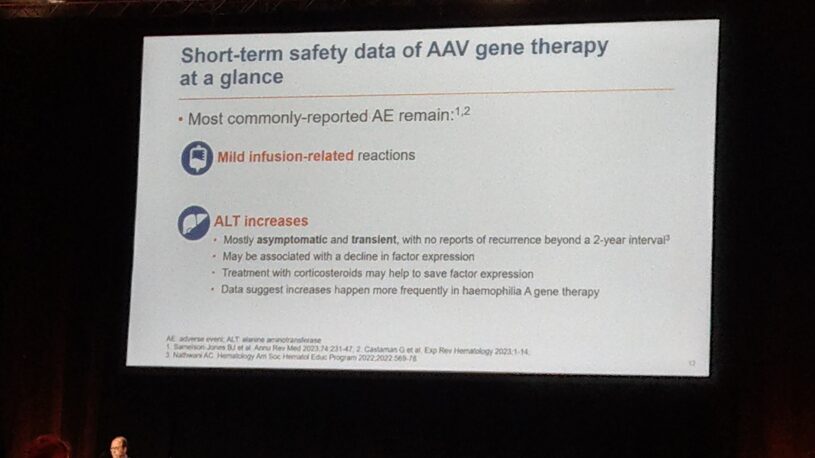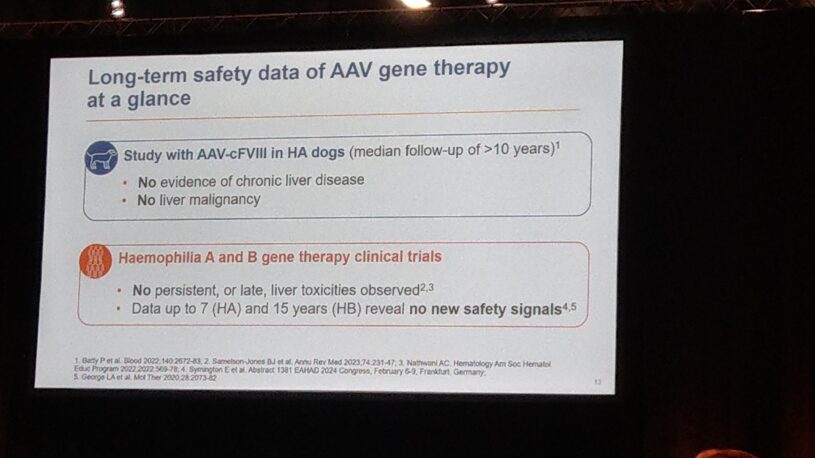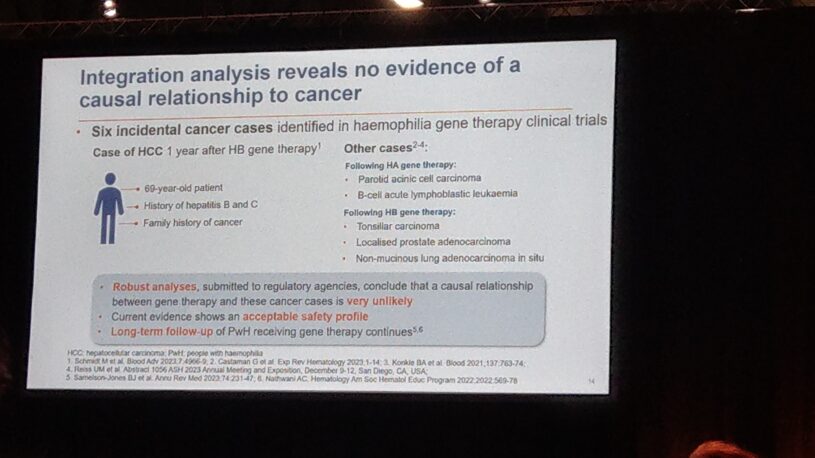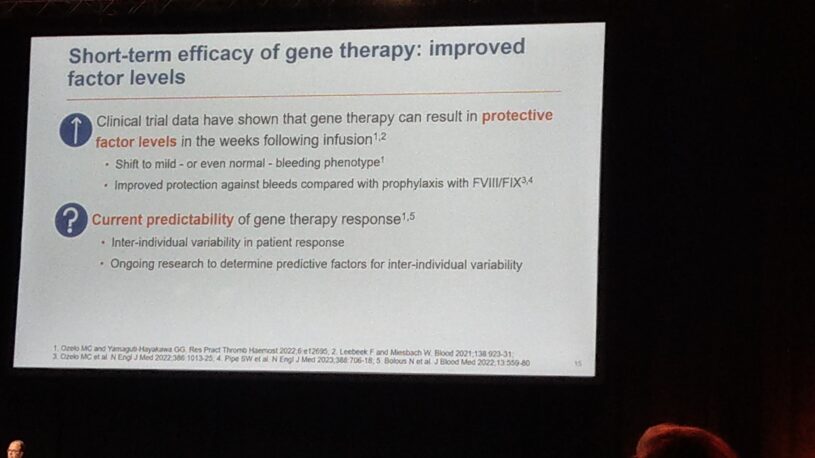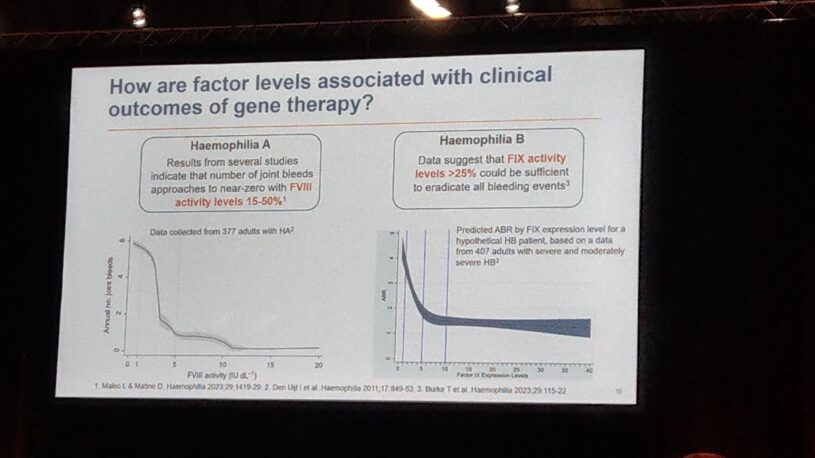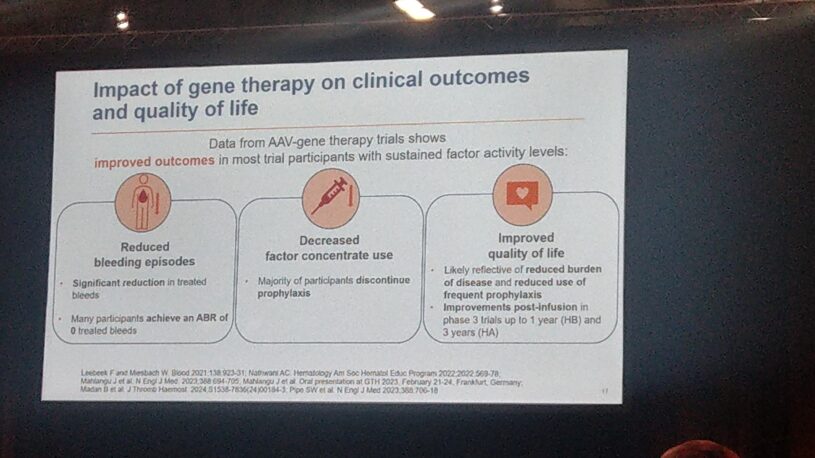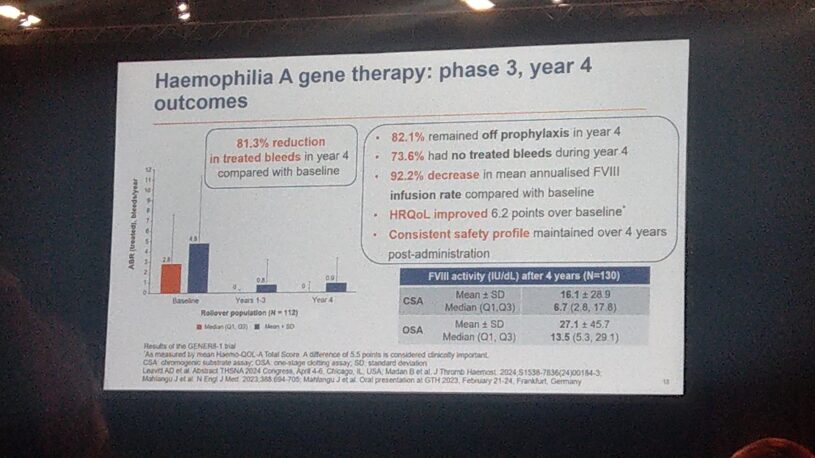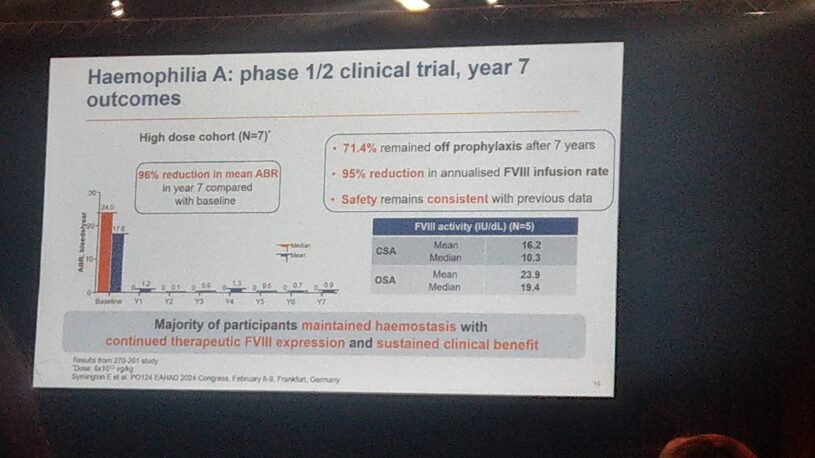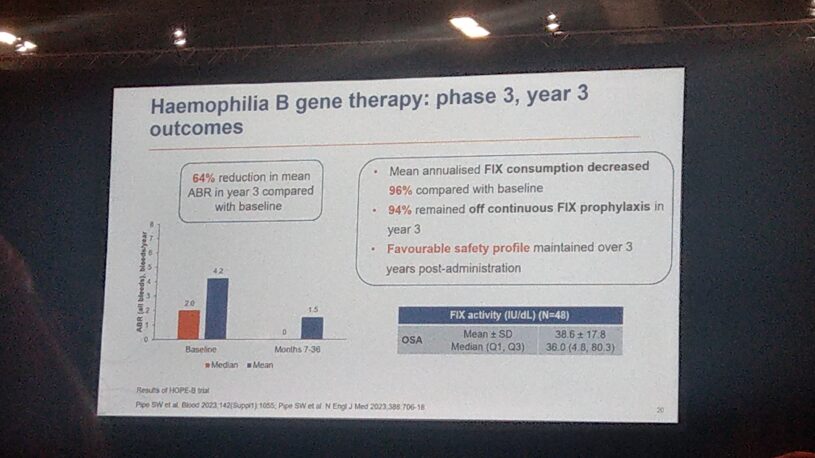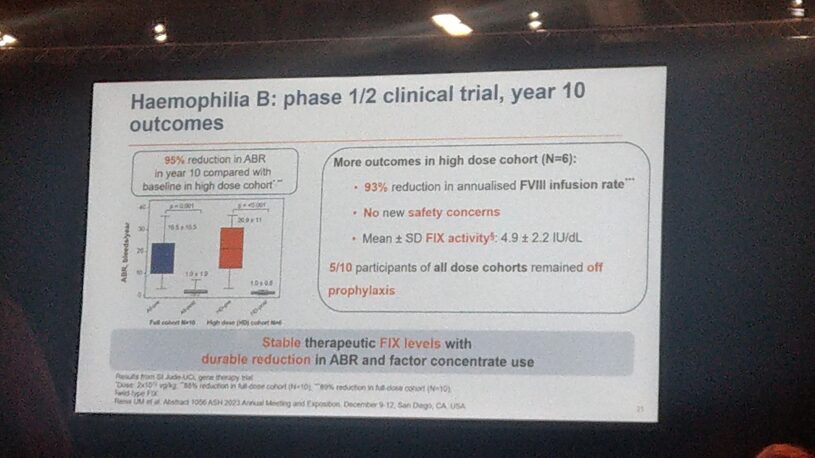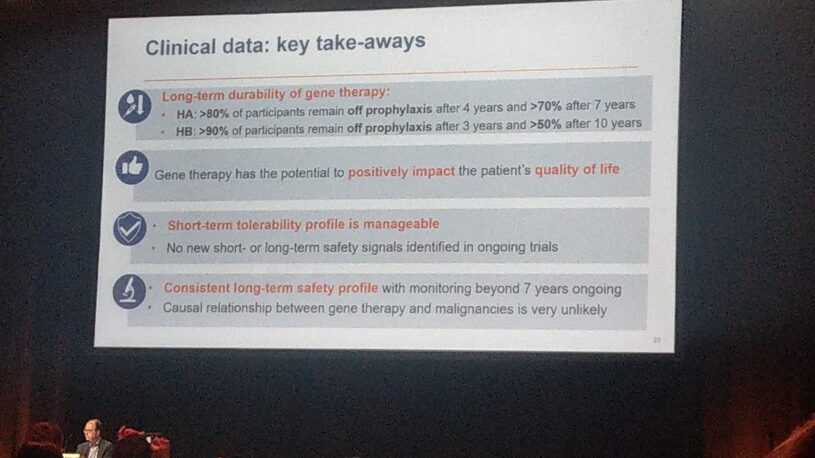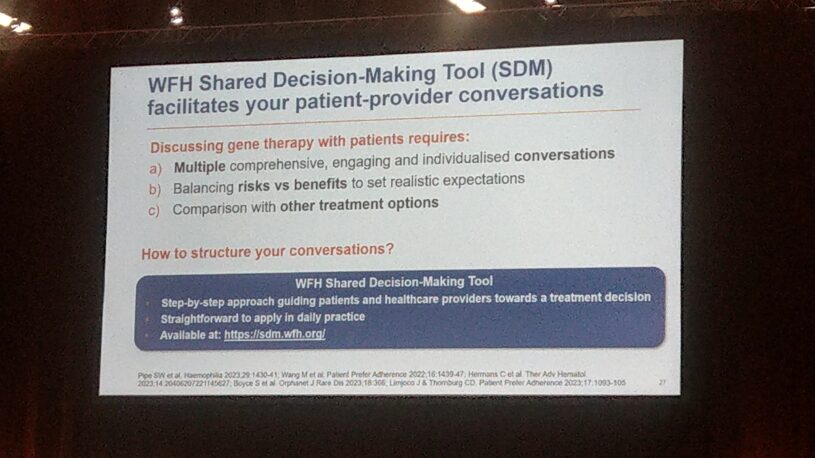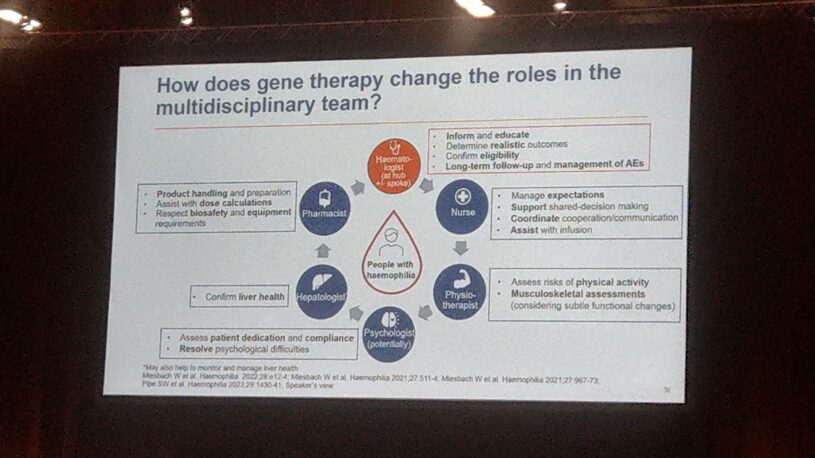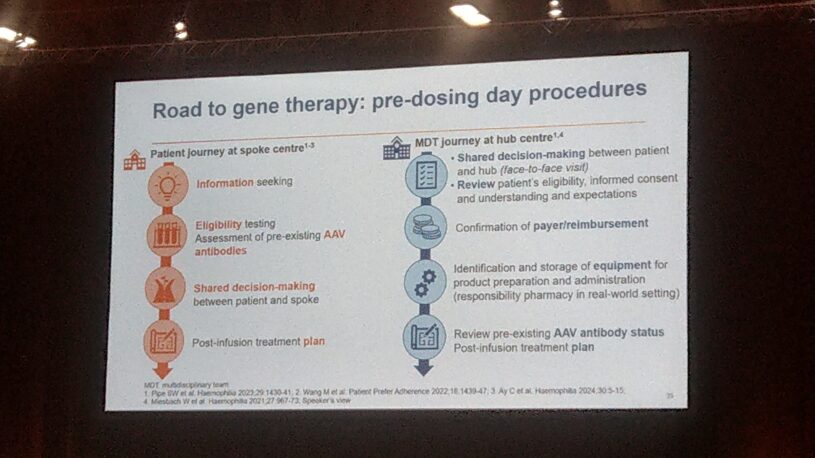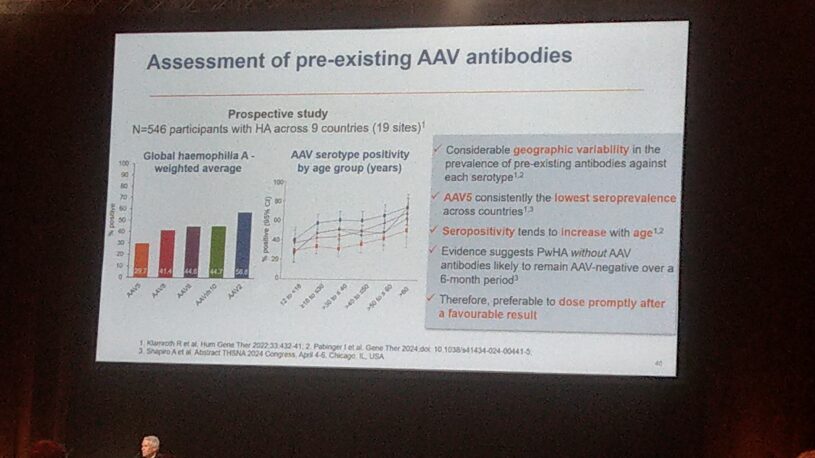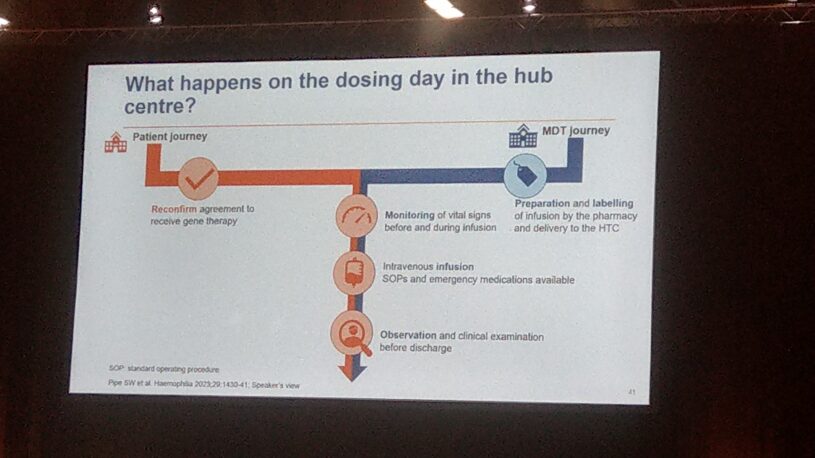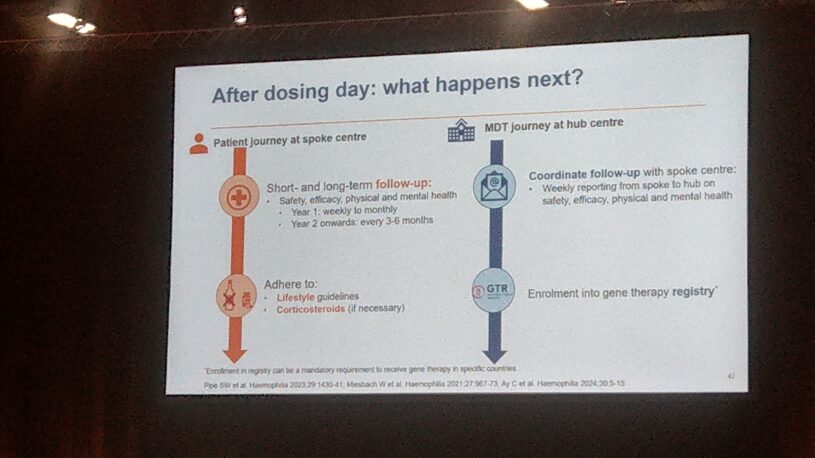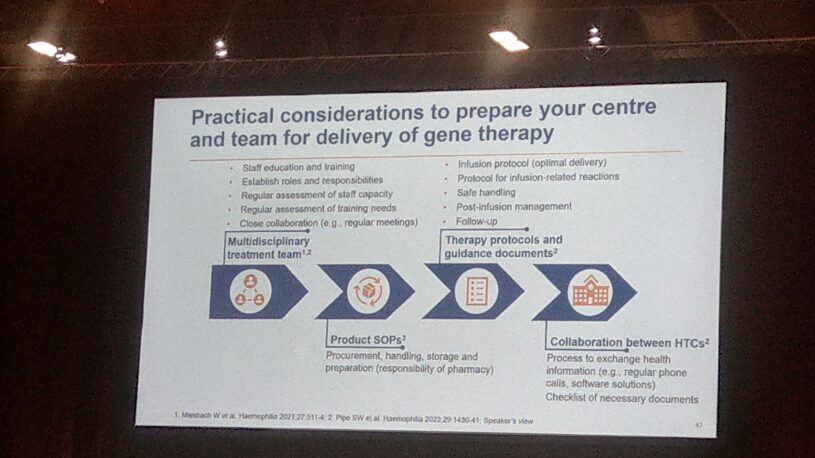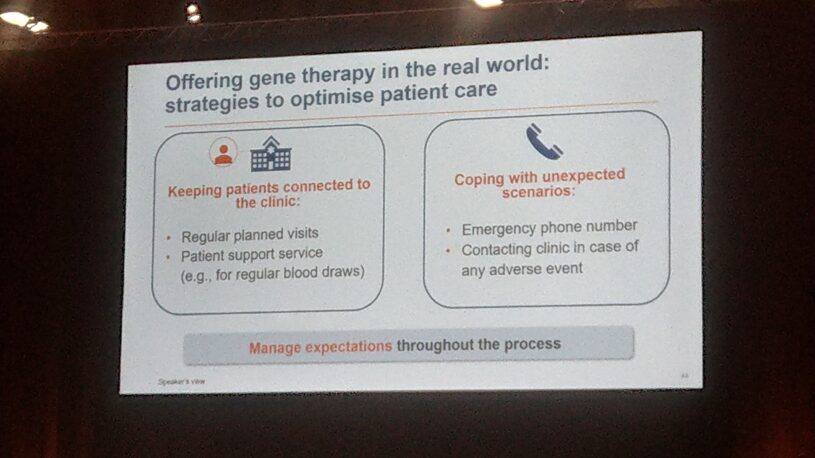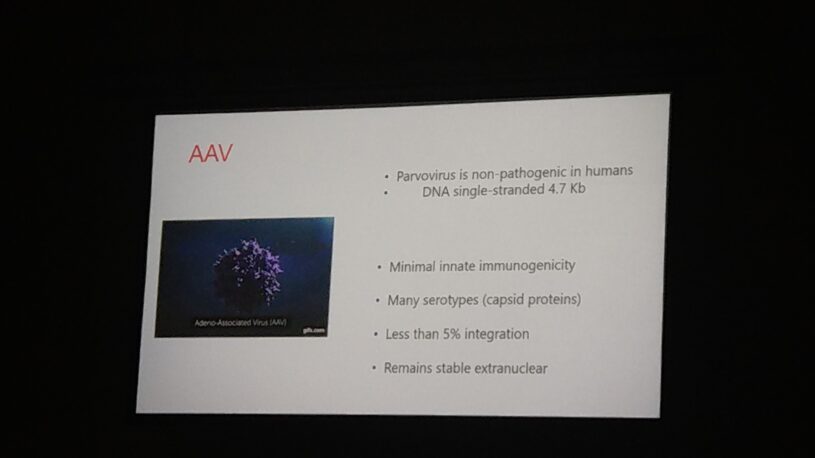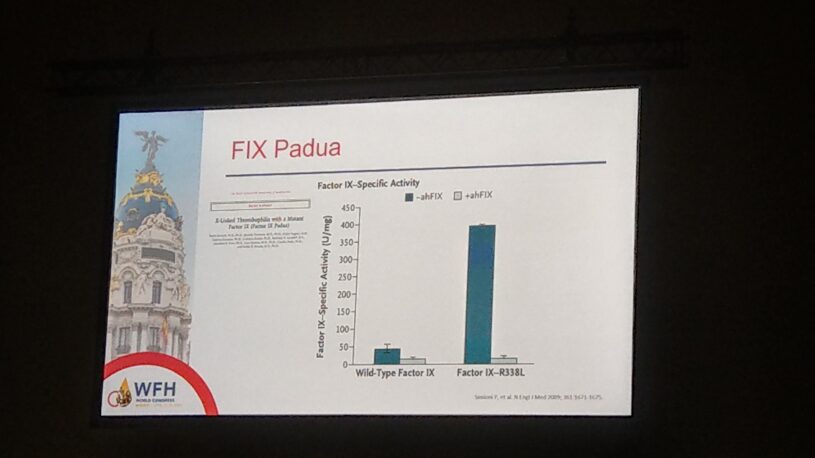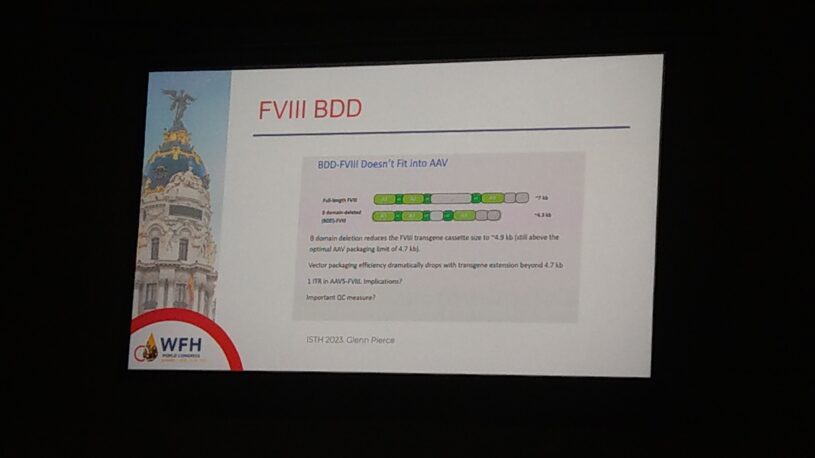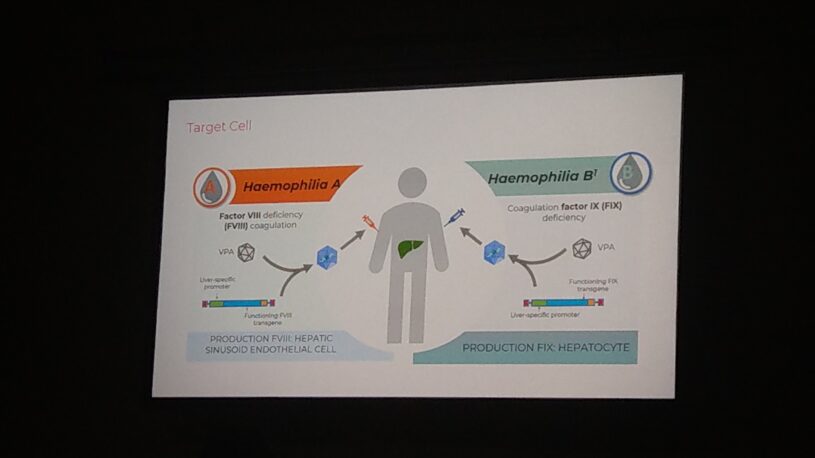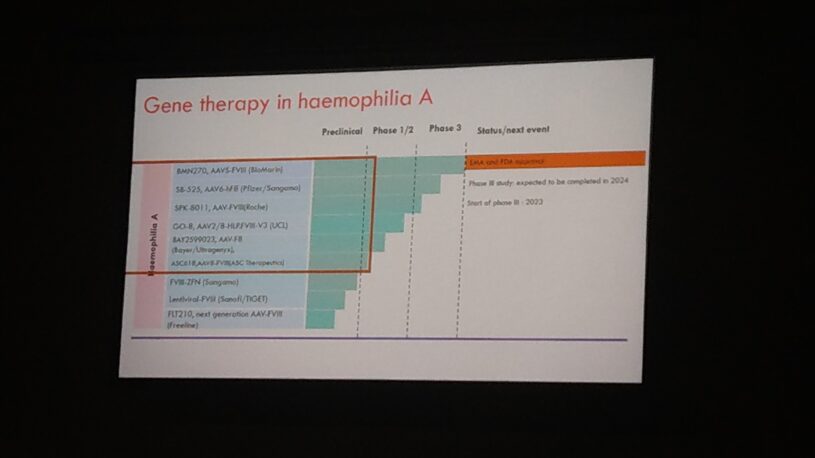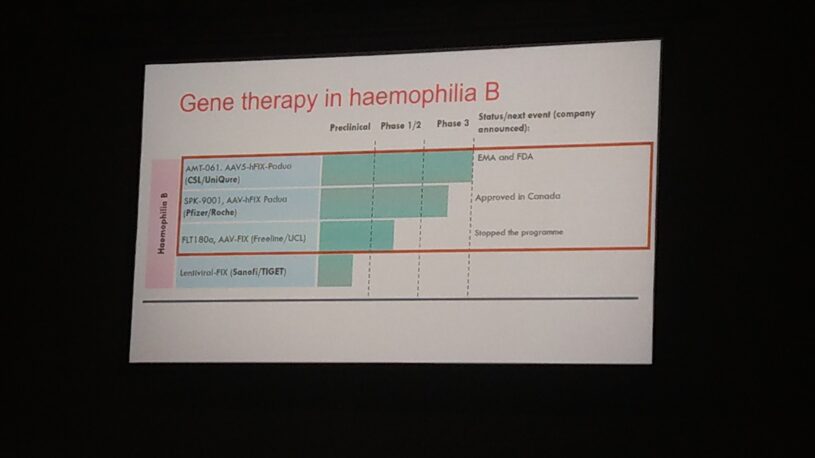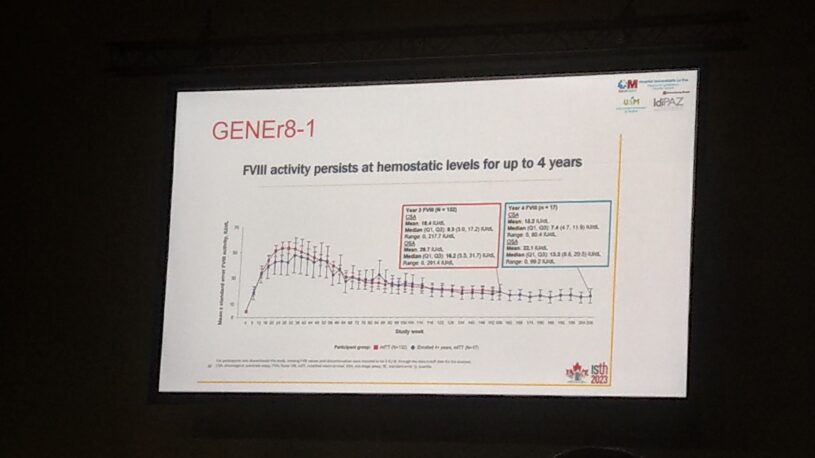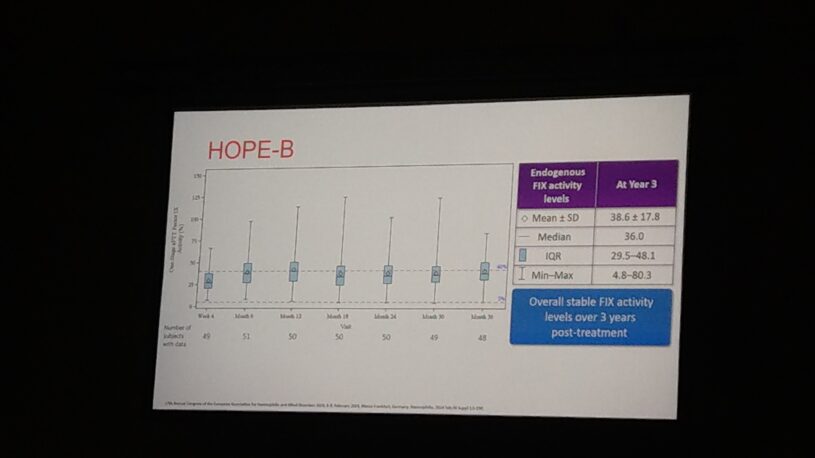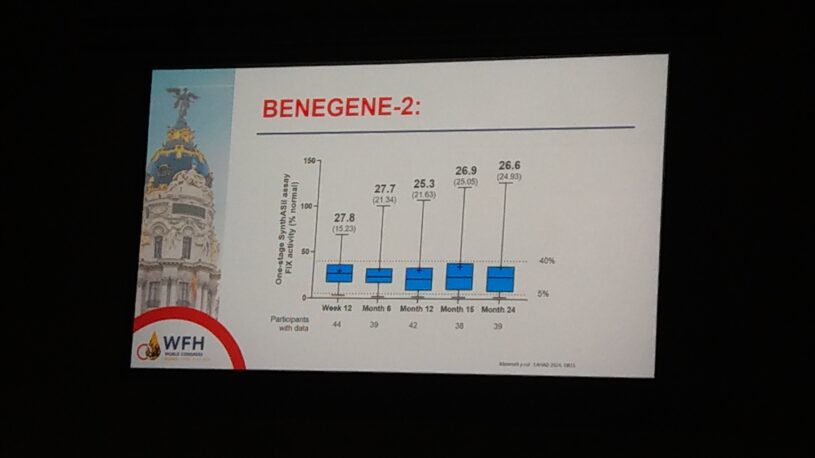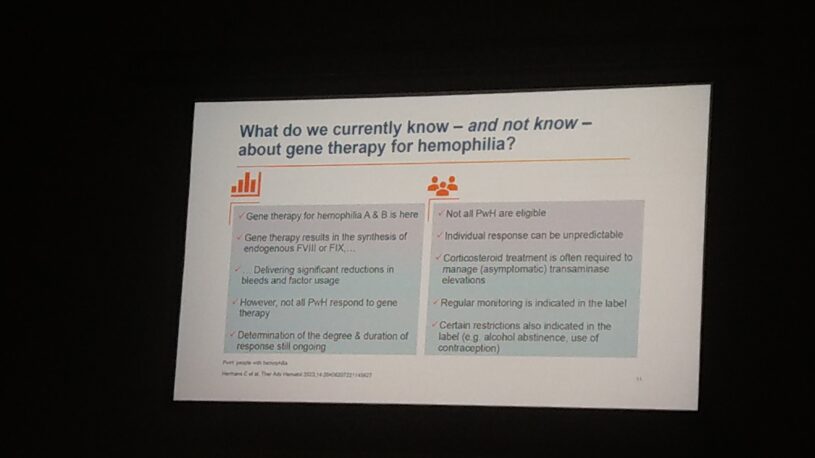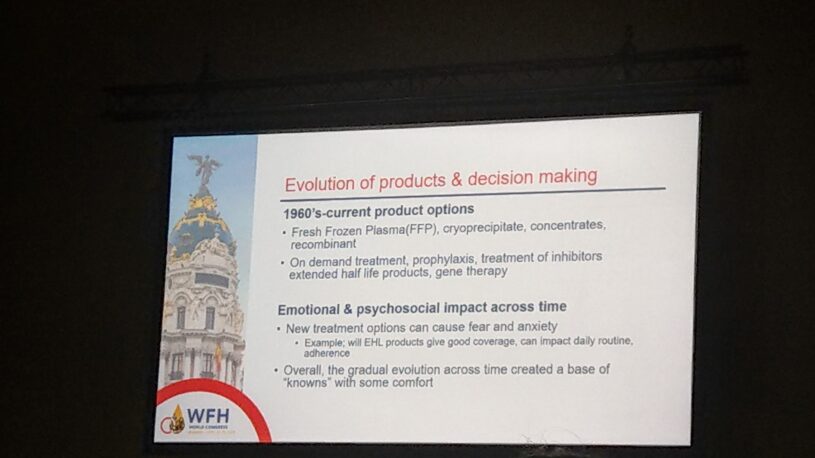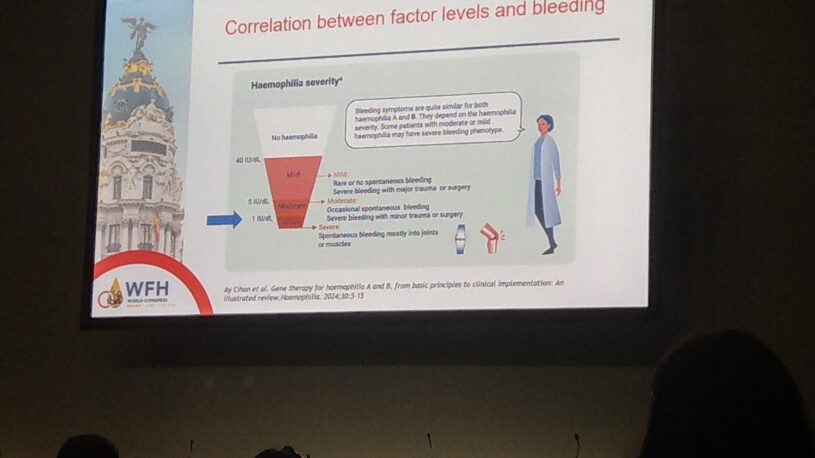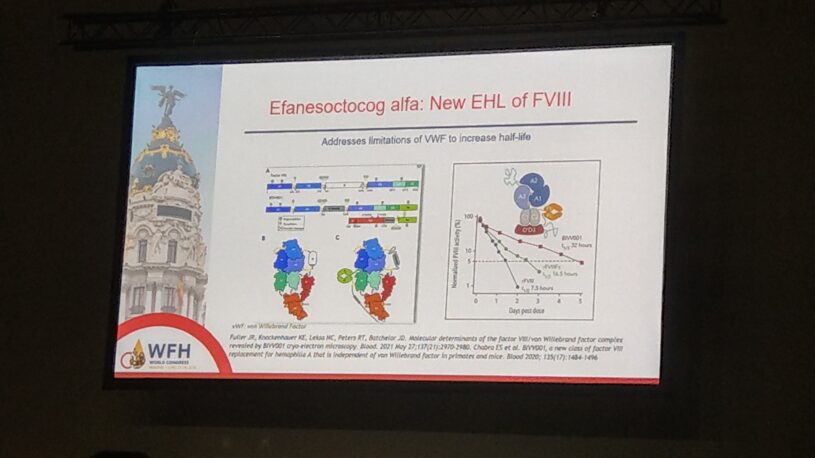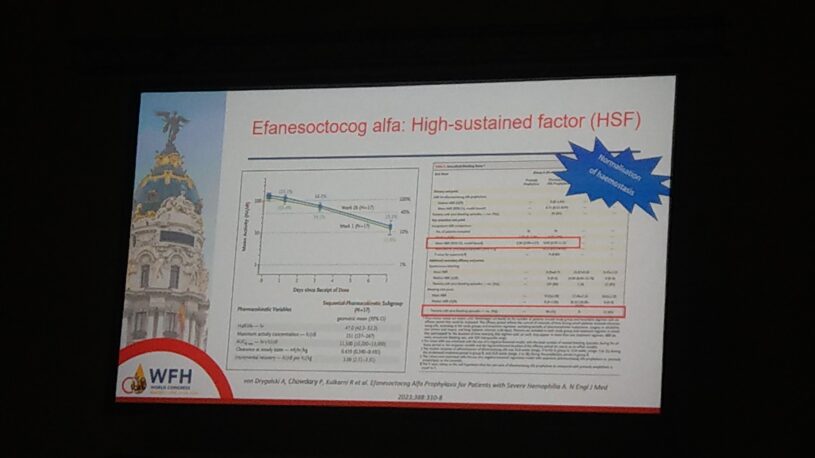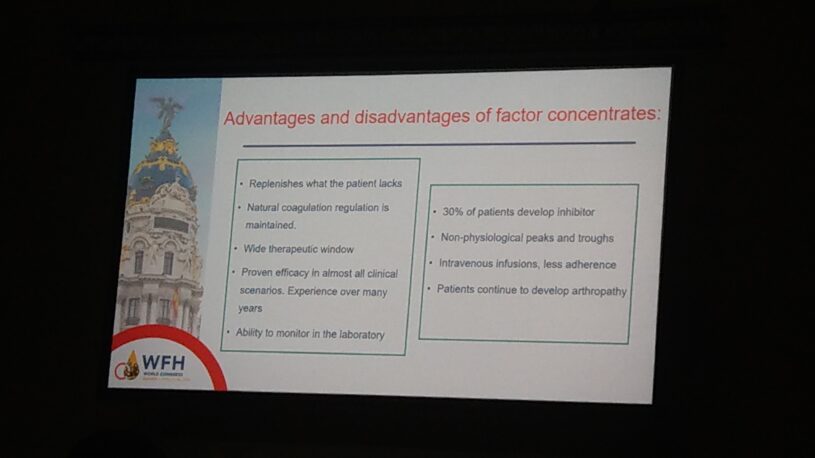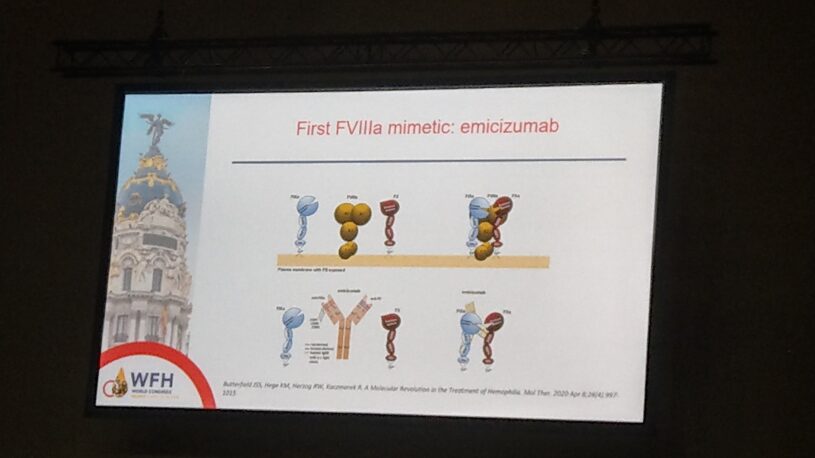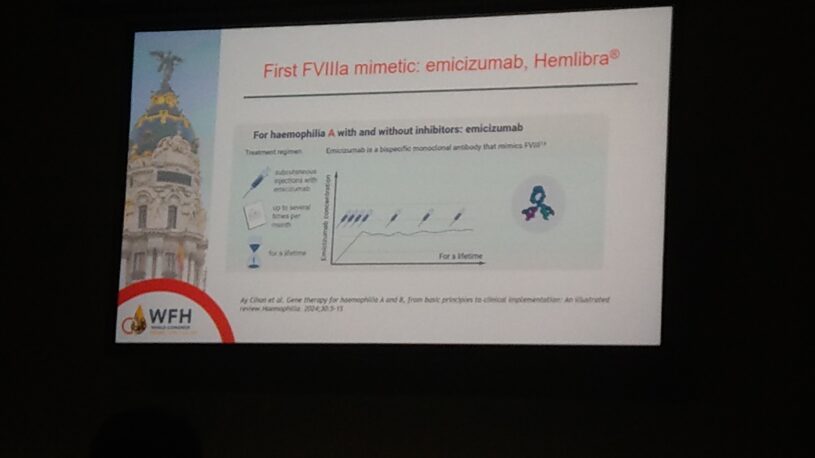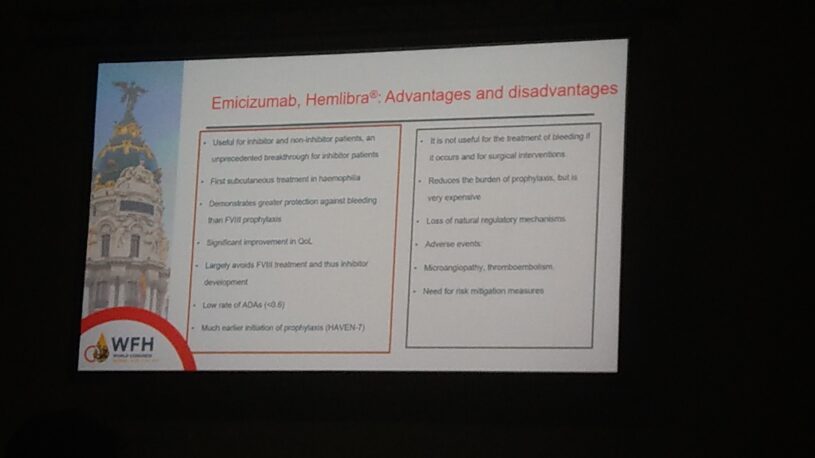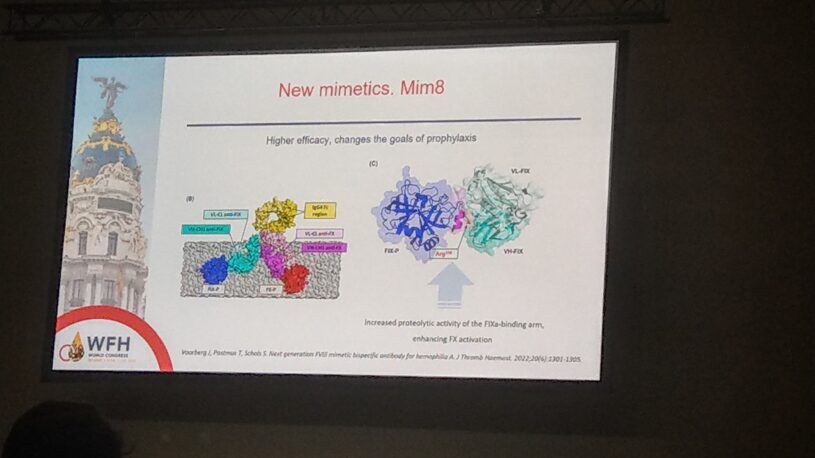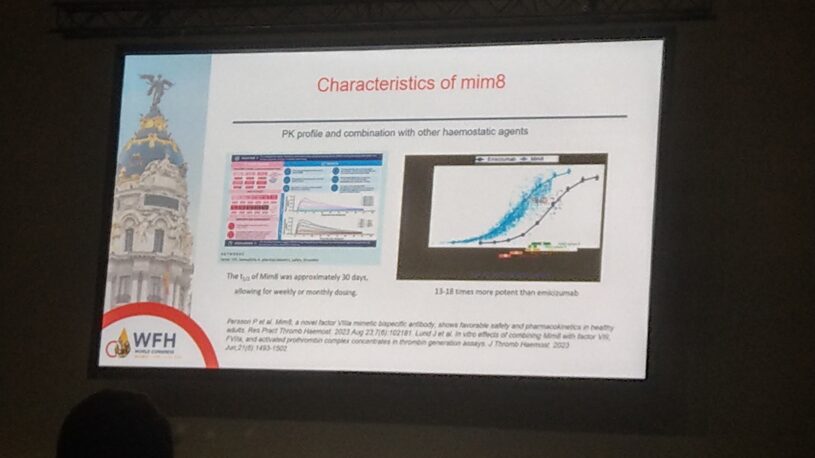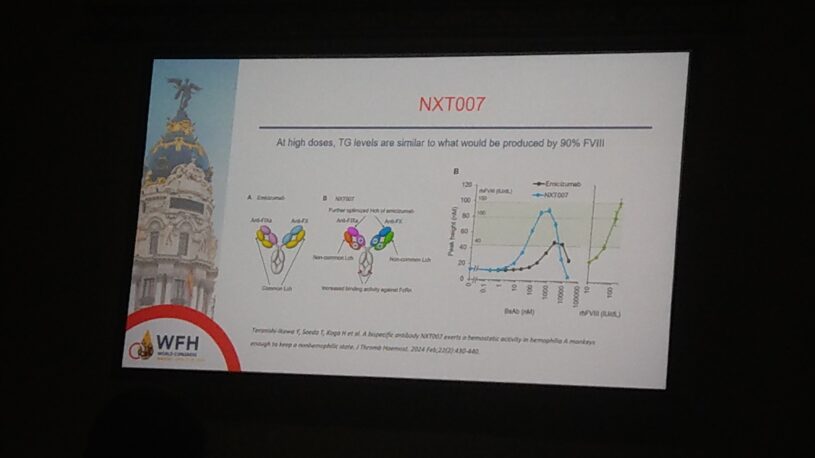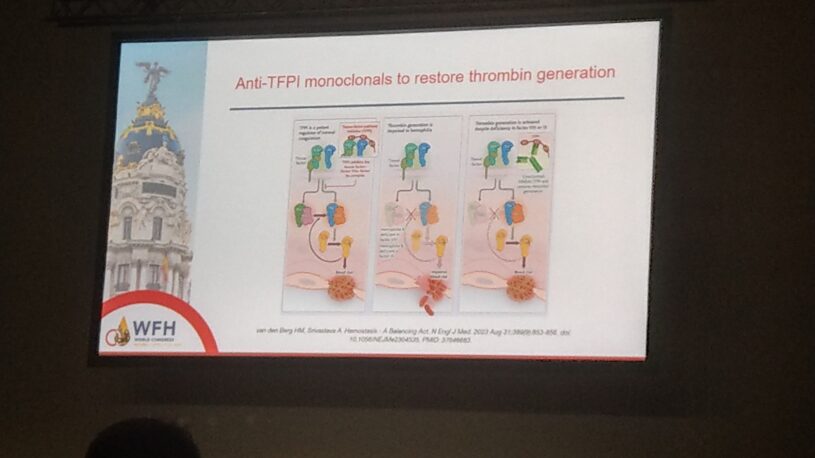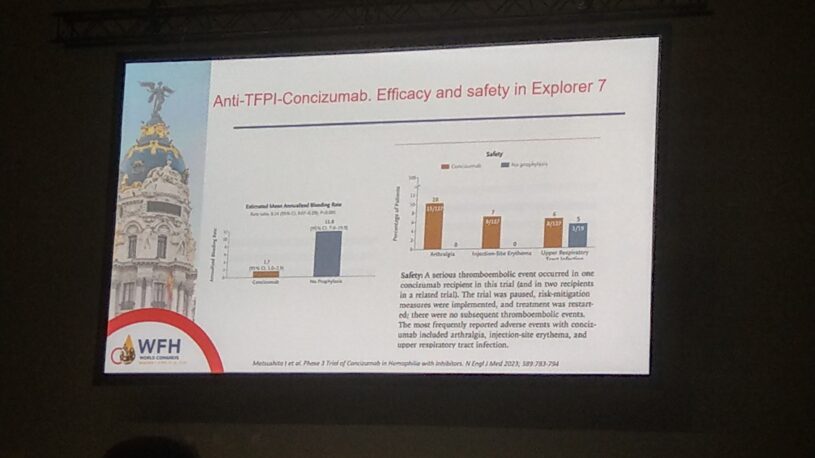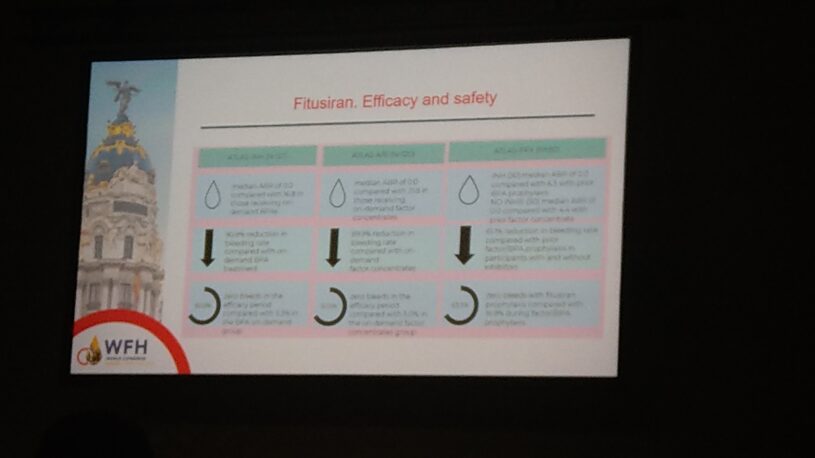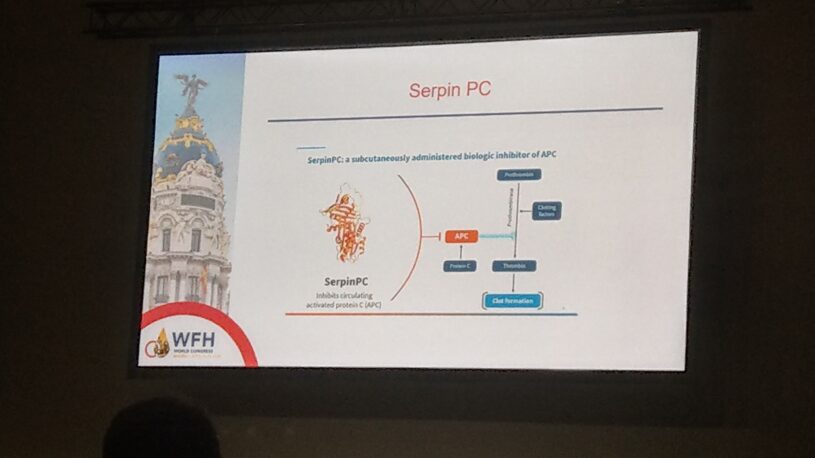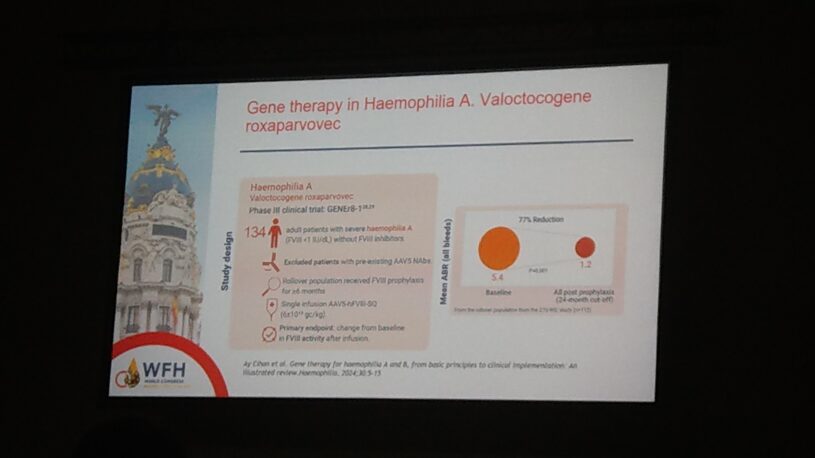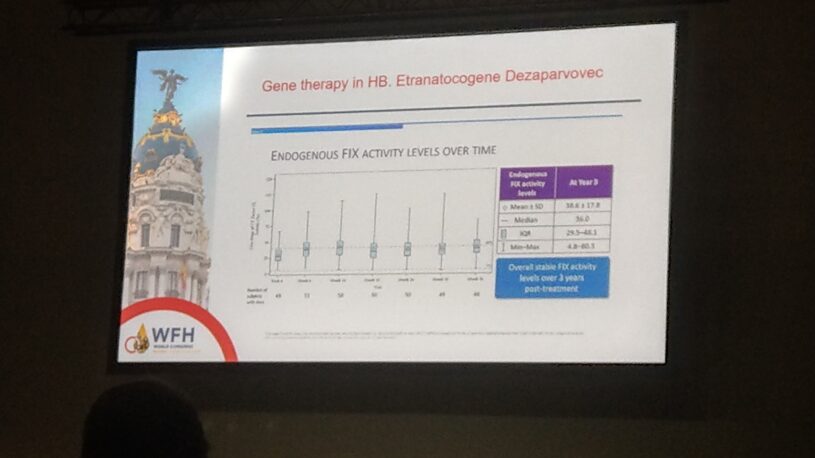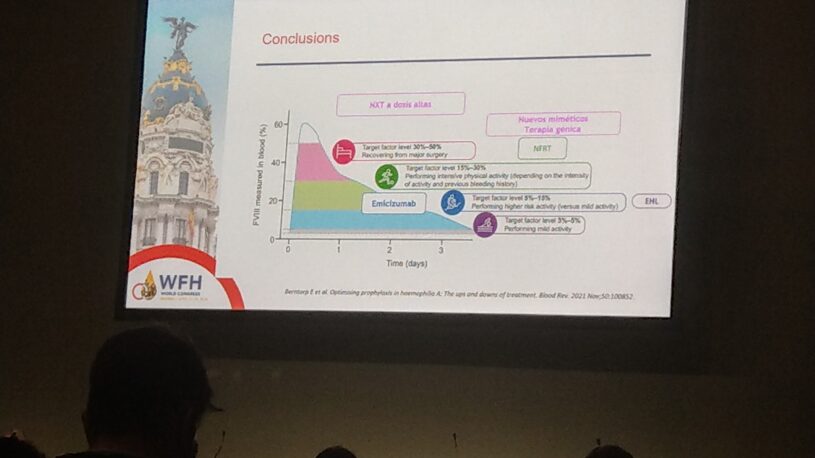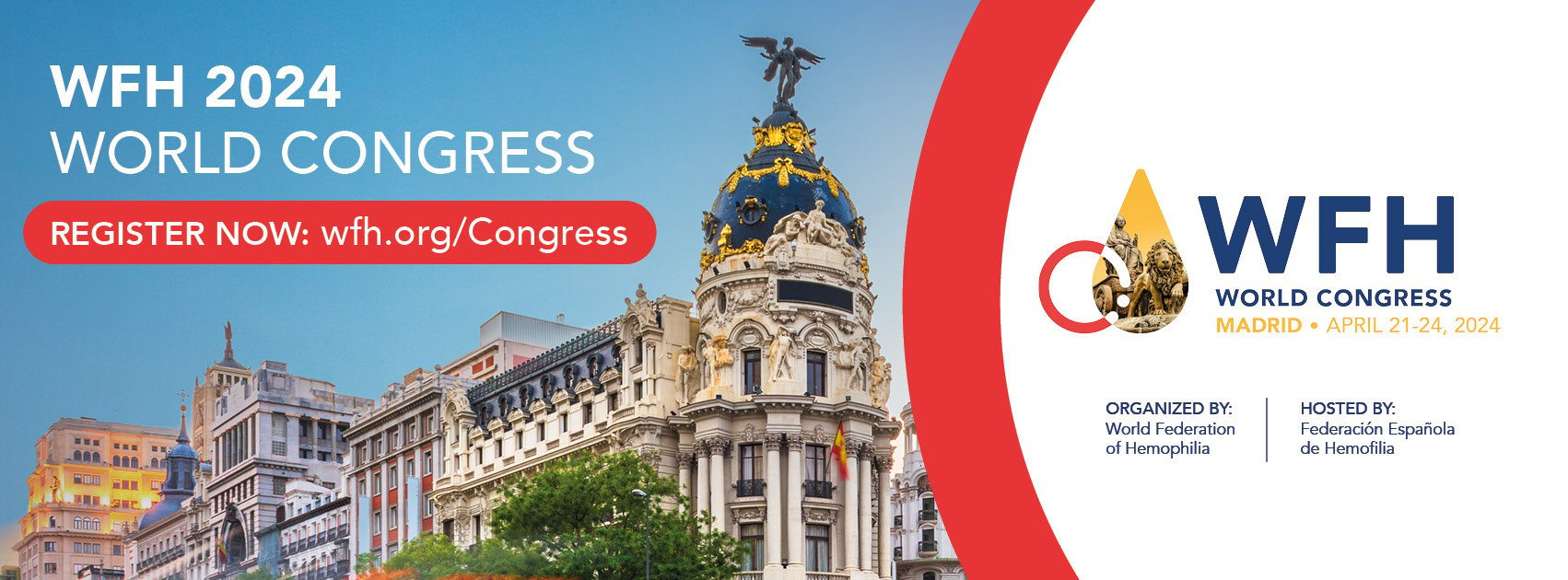
XXXVI WFH kongress toimus 21-24.aprill 2024 seekord Euroopas, Hispaanias Madridis. Eesti Hemofiiliaühingust olid kohal Ines, Annabel ja Martin.
Maailma ja Euroopa Hemofiilia Konverentside programm on mahukas ja igal päeval toimuvad loengud mis enamasti kattuvad oma esitlus aegadega. Seega otsustasime, et jaguneme kolmeks ja käime nendes loengutes mis meid enim kõnetavad ja millest võiks meie ühingule kõige rohkem kasu olla. See ei tähenda, et me oleks kogu aeg erinevates loengutes olnud, mõnel loengul sattusime kõik kolmekesi juhuslikult kokku.
Ines valis loengud mille põhiteemadeks olid kaasuvad haigused-, vananemine- ja valu hemofiilia puhul. Martin käis kuulamas geeniravimitest ja uutest ravimitest millest osad on meil juba kättesaadavad ja mõned mis on lähiaastatel loodetavasti lisandumas. Annabel valis teemad mis olid seotud VWD ja naiste toimetulekud erinevate veritsushäiretega.
Geeniravi kõige põhilisem sõnum oli, et tegemist ei ole raviga mis teeb sind hemofiiliast täiesti terveks. Kuigi geeniravi erinevad katsetused ja uuringud on näidanud, et tegemist on innovaatilise ja elu kergemaks tegeva ravimiga, siis sellel on ka kitsas kohad ja palju küsimusi millele veel ei ole vastuseid ja vajavad enne vastamist.
Rohkem veritsushäirete, uute ravimite ja geeniteraapia kohta saab lugeda Maailma Hemofiilia Föderatsiooni kodulehelt:
https://elearning.wfh.org/elearning-centres/hemophilia/
https://elearning.wfh.org/elearning-centres/von-willebrand-disease/
https://elearning.wfh.org/resource/gene-therapy-for-hemophilia-video/
https://www1.wfh.org/publications/files/pdf-2368.pdf
https://www1.wfh.org/publications/files/pdf-2369.pdf
Enne kui geeniravi kõigile TASKUKOHASEKS ja kättesaadavaks saab, saame juba praegu kasutada ravimeid mis ei vaja enam veenisüsti vaid piisab nahaalusest süstist. Sellise süstimis viis puhul ei ole vaja enam pöörduda haiglasse või õppida veenisüstimist vaid piisab ainult väikesest ravimi doosist naha alla (väga sarnane insuliini süstimisele). Hemofiilia A puhul on selline ravim juba Eesti kättesaadav, Hemofiilia B puhul veel ei ole. See on alles ravimikatsetuses ja seni on see näidanud häid tulemusi. Sellised nahaalused ravimid on ainult profülaktiliseks raviks ja suuremate vigastuste puhul (enne operatsiooni, rasked traumad jms.) peab ikka tegema veenisüstega ravimit.
Tänu Inese kiirele reageerimisele õnnestus meil WFH konverentsil esitleda Kuressaare haiglas toimunud rehabilitatsiooniprogrammi. Selleks tegime valmis plakati mis pandi koos teiste plakatitega ülesse näitusele kus konverentsi külastajad said käia uudistamas ja küsimusi küsimas.
Meie plakatit käisid teiste seas külastamas ja uudistamas Prof. Berntrop ja Bayeri esindaja Kärt Tali. Prof. Berntrop on käinud varem Tartus.
Näituste kõrval olid erinevad ravimitootjad pannud ülesse oma esinduslauad ja nurgakesed kus sai käi ennast tutvustamas ja uusi kontakte loomas. Lisaks juba praegustele kontaktidele ja toetajatele käisime CSL Behringu laua juures sooviga tutvuda Baltimaade esindajaga ja temaga uued kontaktid luua.
Lisaks ravimitootjate esindajatega tutvumist kohtusime juba tuttavate Soome, Rootsi, Taani ühingu hemofiilihaigetega ja saime tuttavaks Soome füsioterapeudiga. Taastusraviarst Klaus Österholm, kes külastas meid Värskas 2017 Suveseminaril tervitas kõiki meie EHÜ liikmeid.
Toimus ka EHC erakorraline koosolek, millest võtsime samuti osa.
